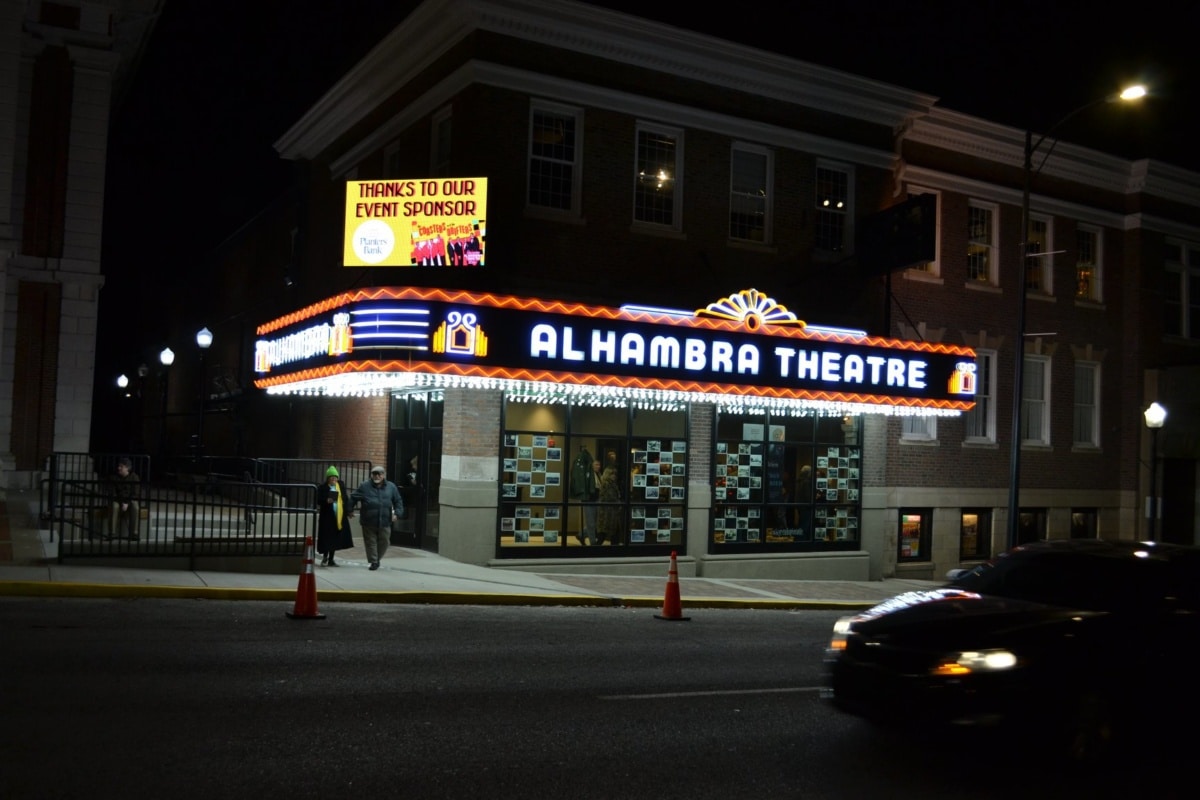The Alhambra Theatre was built just before the Great Depression as part of a municipal building that housed city, county and state operations. In addition to the movie theater, the City-County Public Building constructed next door to the courthouse also had an armory, police station and city hall.

The theater opened in May 1928 to show silent movies accompanied by musicians in the orchestra pit between the stage and the auditorium. It closed within a year to be updated for sound movies and reopened in September 1929. The first sound movie at the Alhambra was “His Captive Woman,” Jim Coursey wrote several years ago for a newspaper column.
Named for the 13th century palace in Spain, the Alhambra retains much of its original interior design with a Spanish-Moorish décor.
The county had contracts with different cinemas companies to manage the Alhambra as a movie house until around 1980, and its transition to a local performing arts center began a few years later.
The fact that county government owns the Alhambra is likely one of the key reasons Hopkinsville’s downtown theater didn’t shut down for good and degrade past the feasibility of having it restored for a new purpose. In many communities, too many years of neglect made it impossible, or too costly, to save old movie houses after cinema companies departed for new theaters in malls and shopping centers.
But even the Alhambra’s survival was, at times, was in doubt.
Margaret Prim, executive director of the Pennyroyal Arts Council, was reminded of that fact this week when someone gave her a copy of a story published Feb. 15, 1985, in the Kentucky New Era. It was written by longtime New Era staffer Mary D. Ferguson, who was inducted into the Kentucky Journalism Hall of Fame following her death in 2016.
Ferguson’s story notes the influence of two Hopkinsville women – Becky Williams and Jane Chapman – who had a role in convincing choral departments at Hopkinsville and Christian County high schools to use the theater for big musical productions. Soon, others were interested in saving the Alhambra for a new use.
Since 1983, the Pennyroyal Arts Council has managed the Alhambra for the county.
A massive renovation of the Alhambra, financed through a tourism tax levied by the county, was completed last November.
The renovation included an expansion of the theater’s square footage into the building’s second floor, which previously housed circuit court clerk offices. It’s now called The Hall at the Alhambra and has a bar and seating for about 80 people.
The Hall’s 1920s décor and local artifacts are a nod to the Alhambra’s history. A photograph of the building’s designer, John Trice Waller, hangs there today.
When the renovation uncovered the Alhambra’s cornerstone, Prim was interested to see evidence of a city-county collaboration in its creation.
“That was very telling,” she said. “Ninety years later, it is still going strong.”
Jennifer P. Brown is co-founder, publisher and editor of Hoptown Chronicle. You can reach her at editor@hoptownchronicle.org. Brown was a reporter and editor at the Kentucky New Era, where she worked for 30 years. She is a co-chair of the national advisory board to the Institute for Rural Journalism and Community Issues, governing board past president for the Kentucky Historical Society, and co-founder of the Kentucky Open Government Coalition. She serves on the Hopkinsville History Foundation's board.


